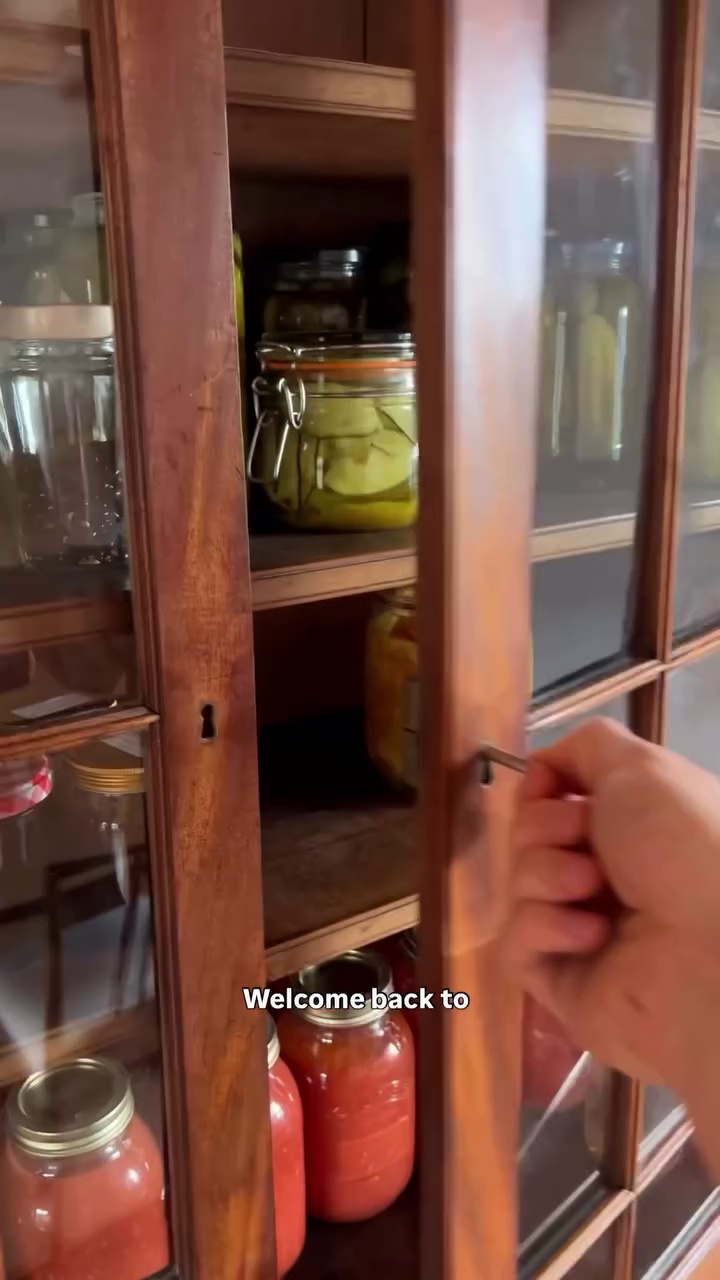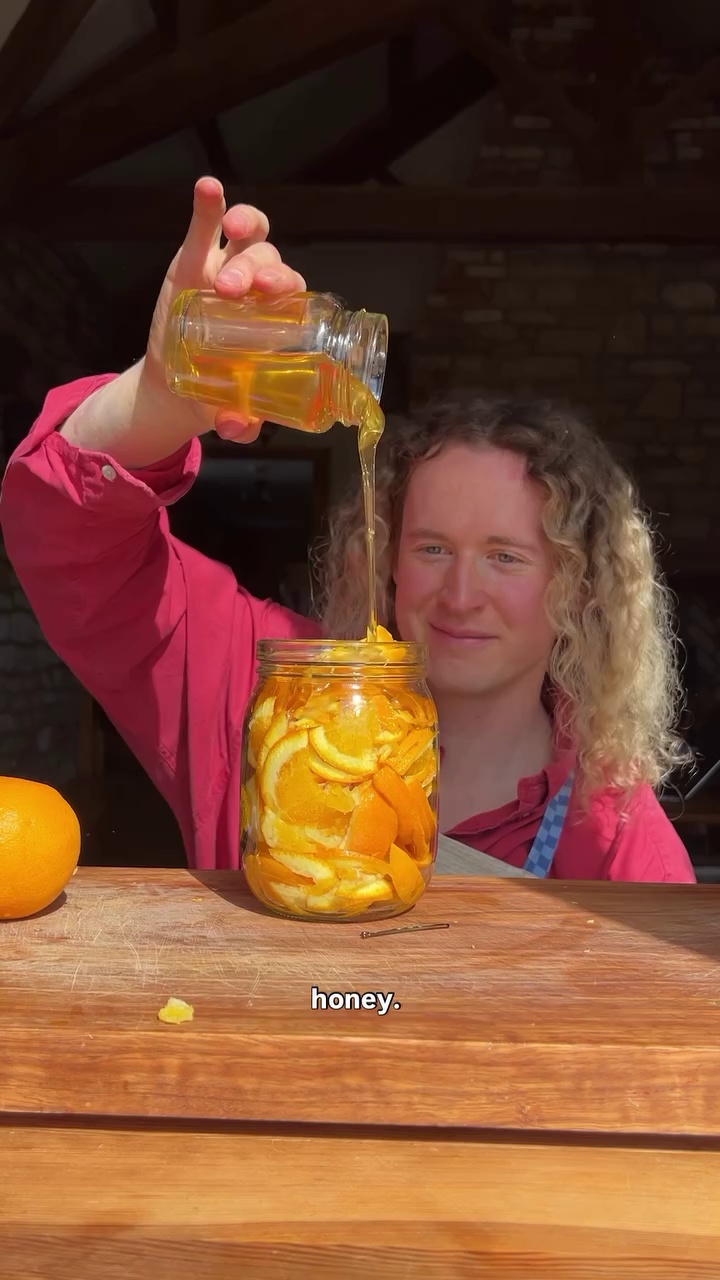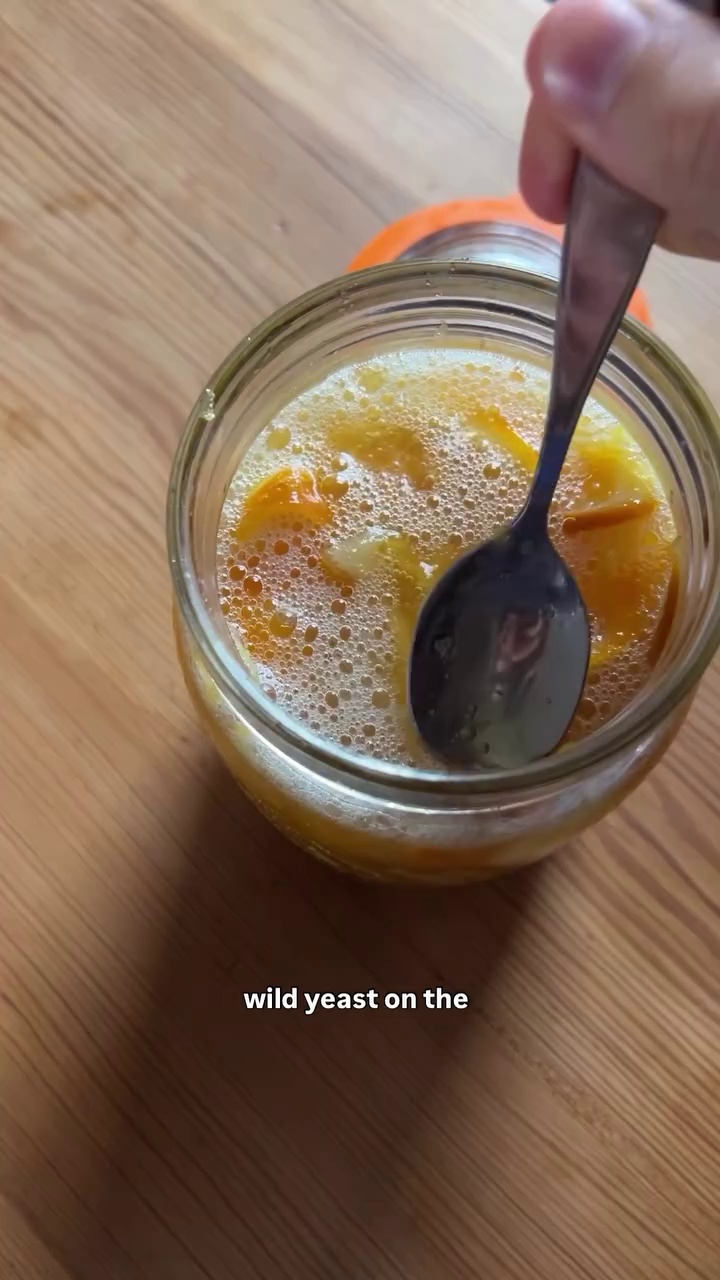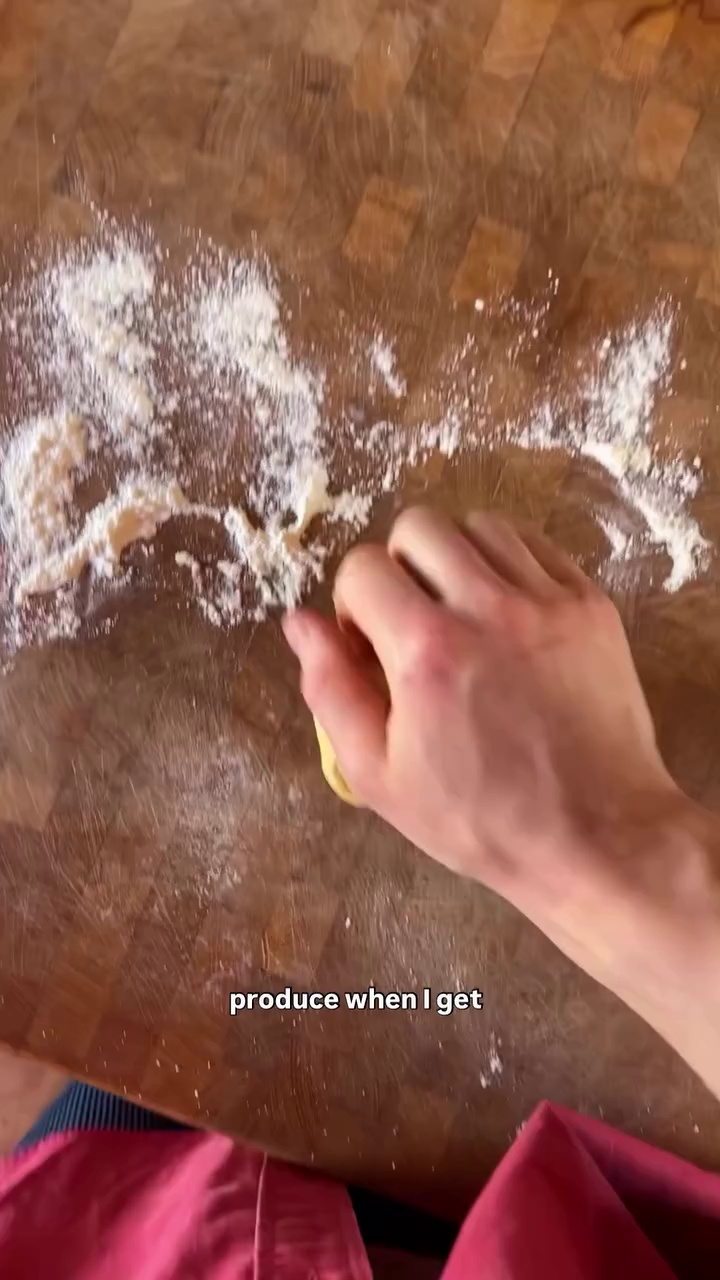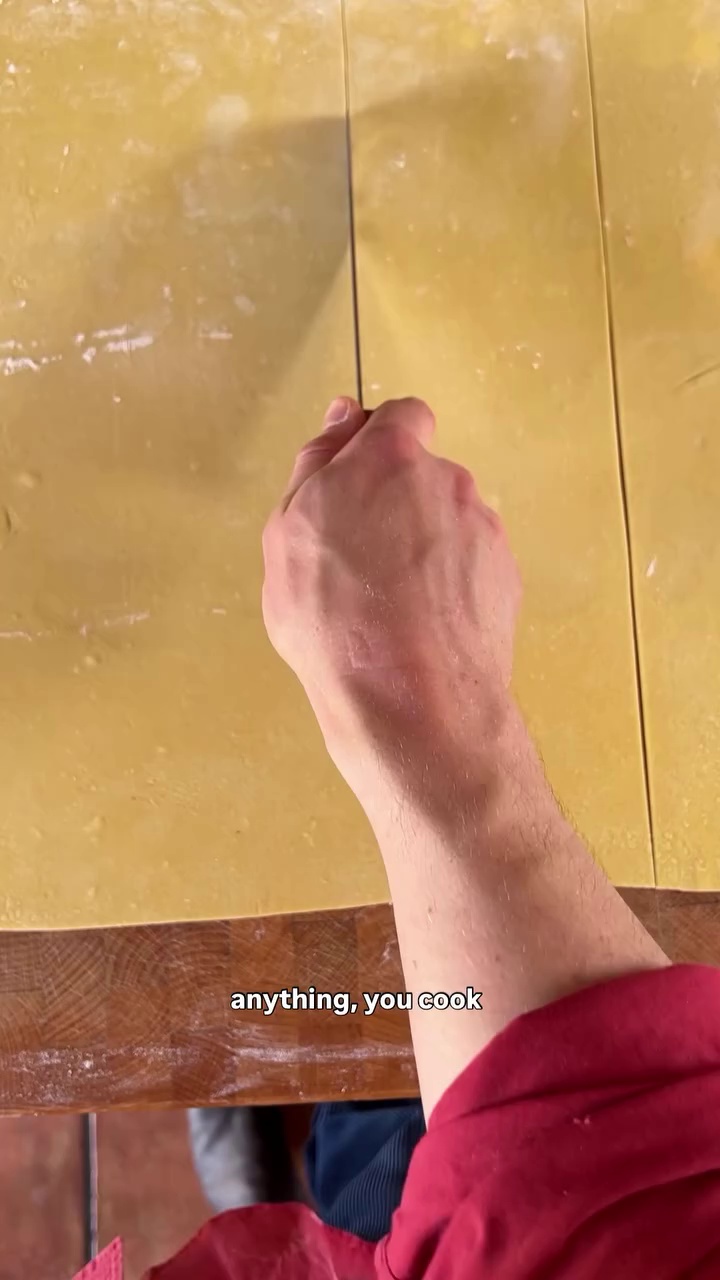Back to Fermentation / Mediterranean Recipes
Author:
Bob Dickinson • Wholesome food • Recipes & Inspiration
Instagram
0
123K
Fermented Honey Oranges
A delightful recipe for fermented honey oranges, perfect for preserving the fruit and adding a unique, sweet-tart flavor to your meals. This simple method uses organic oranges, optional aromatic cardamom pods, and runny honey to encourage natural fermentation, resulting in a versatile condiment or dessert component.
#Fermentation
#Oranges
#Honey
#Preserve
#Healthy
#Condiment
#Vegan
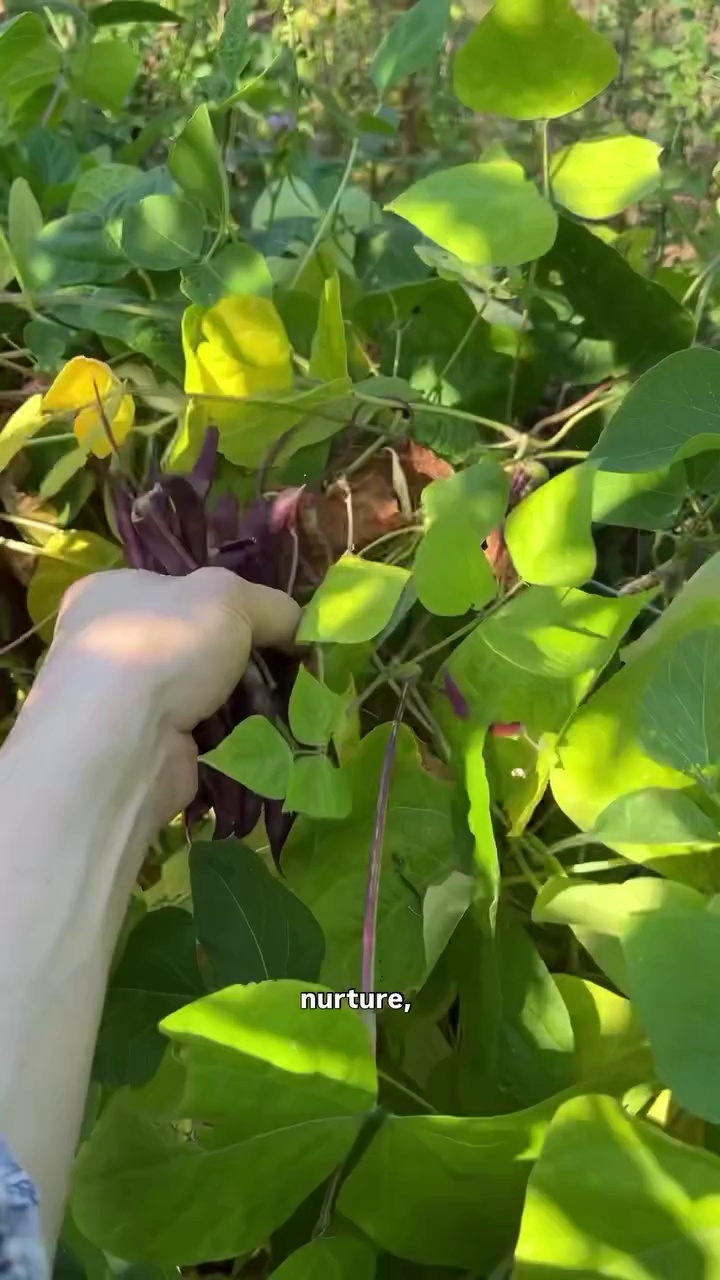
Prepared oranges and honey
Recipe Information
25m
Prep Time
0m
Cook Time
25m
Total Time
8
Servings
Easy
Fermentation / Mediterranean
English
Nutrition (per serving)
150
Calories
1g
Protein
35g
Carbs
0g
Fat
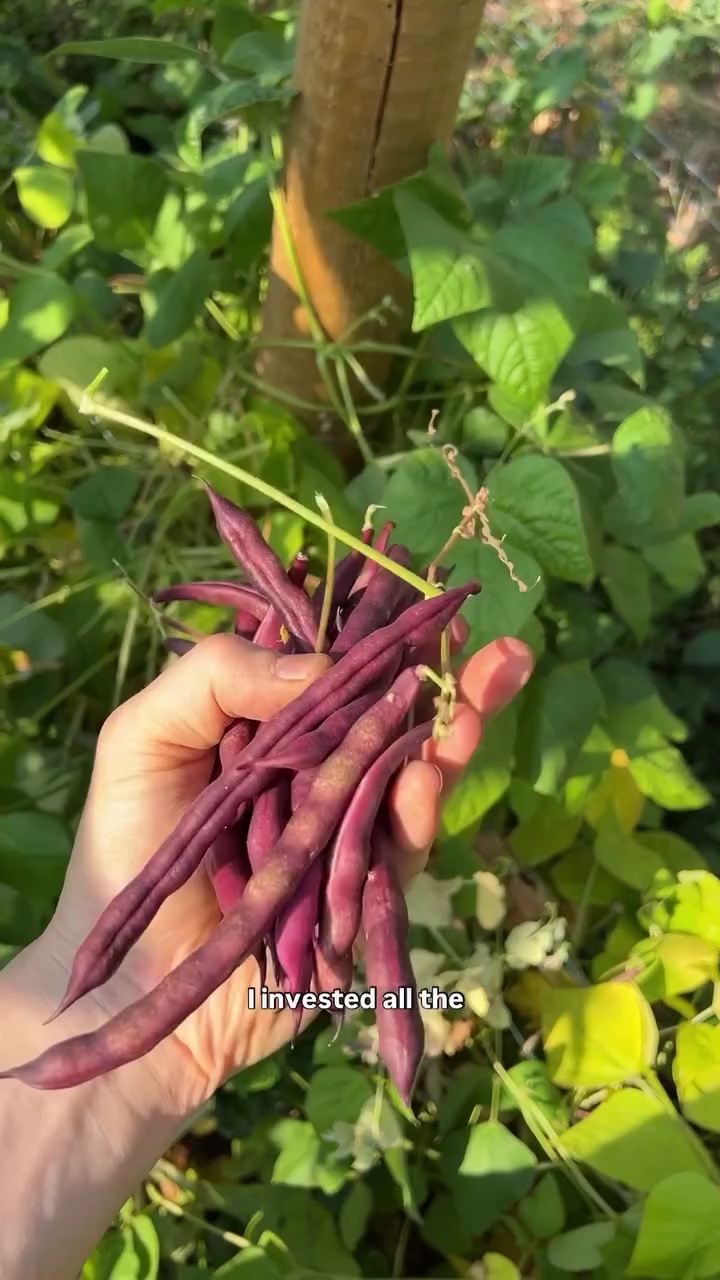
Layering oranges and cardamom in the jar
Ingredients
advertisement
Servings: 8
💡 Tip: Check off ingredients as you add them to keep track of your progress!
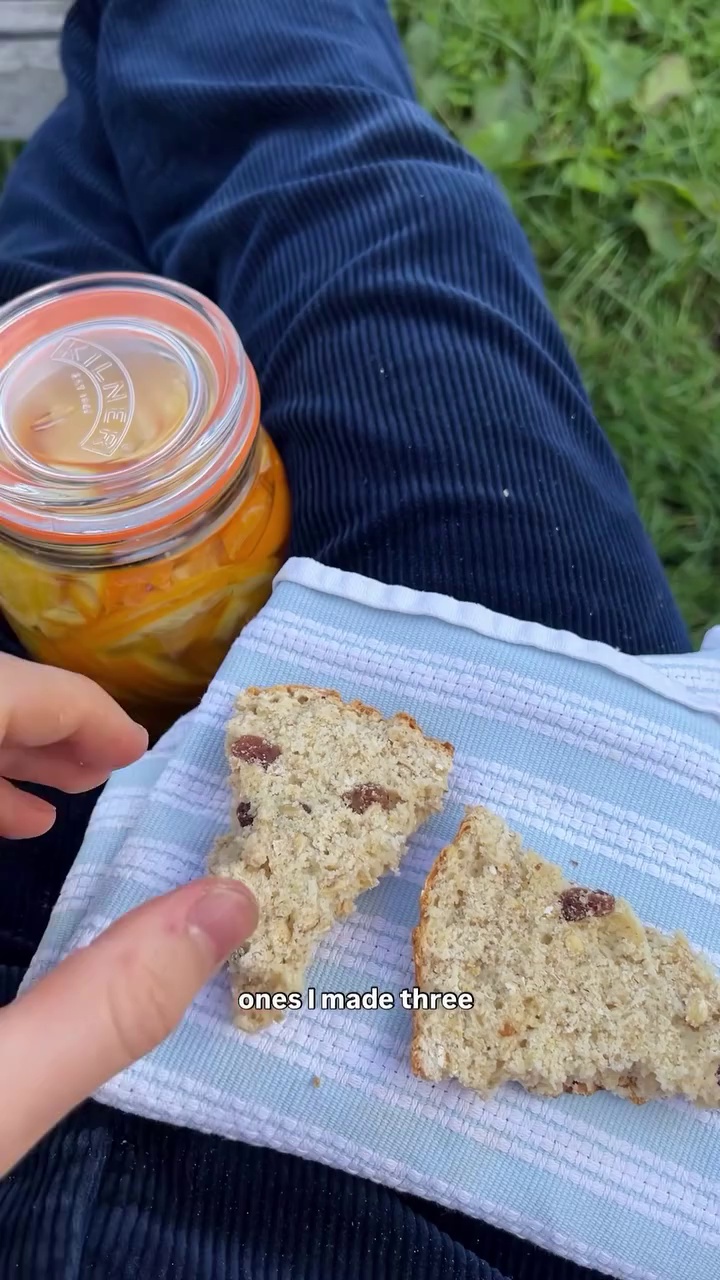
Honey poured over ingredients
Instructions
0/5 completed
0%
advertisement
advertisement
💡 Tip: Click on any step to mark it as completed and track your cooking progress!



